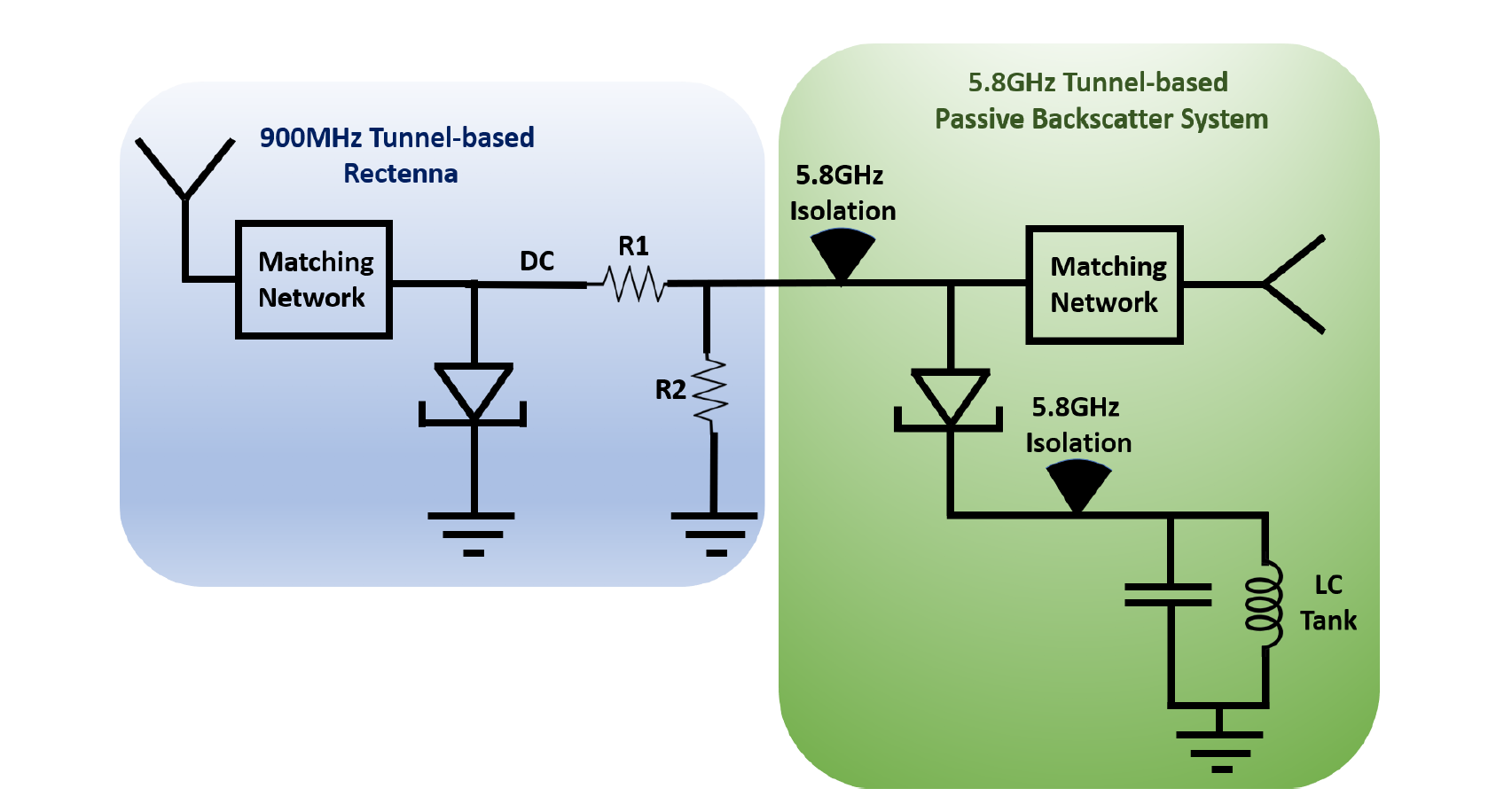This backscatter system is a first of its kind in radio frequency identification (RFID) designs: a combined single-element oscillator/reflection-amplifier in a single architecture. The unique technology from Georgia Tech provides amplified backscatter, which lowers voltage consumption while also increasing range and improving performance.
To achieve this, the system combines two critical features for RFID range extension—the highest reflection-amplification RFID gain in the known literature (48 dB) and higher-than-MHz subcarrier offset frequency—while displaying power consumption lower than that of any comparable commercial (amplifier-less) oscillator at just 20 μW. The highly voltage-sensitive system also works synergistically with a self-regulating diode-based rectifier, which may enable fully tunnel-diode-based passive RFID designs for practical kilometer-range and ultra-low-power backscattering RFID systems, Internet-connected wearables, and other Internet of Things (IoT) devices.
- Streamlined: Uses a single element—one tunnel diode with few passive components—to achieve dual functionality of simultaneous oscillation and reflection-amplification
- Efficient: Combines the features of conventional RFIDs and tunnel diode-based reflection amplifiers while using an extremely low biasing voltage of only 88 mV, consuming only 20 μW, and offering a reflection gain of 48 dB
- Long range: Provides the highest observed gain in the literature for a given input power
- Unprecedented: Is the only known system to use a single active component to build an entire architecture capable of modulation and amplification
Georgia Tech’s architecture provides a foundation for long-range and ultra-low-power backscattering RFID designs ideal for:
- IoT devices
- Internet-connected wearables
- Smart agriculture
IoT devices employ active wireless architectures with power levels typically exceeding 5 mW. Lower power alternatives (single-digit μW) are offered by backscatter communications typical of RFID designs, often praised for their sub-μW power consumptions. Unfortunately, this lower power consumption is dwarfed by that of its modulating baseband circuitry. These traditional backscatter systems also offer shorter reading ranges compared with active architectures, making them lackluster options for next-generation devices. George Tech’s technology addresses the need for a middle-range solution that balances the need for lower power consumption with long range by providing a first-of-its-kind system that provides amplified backscatter in a single-element architecture with ultra-low voltage consumption and the highest gain in the literature.

Georgia Tech’s architecture combines major functions of a tunnel diode to form a self-sufficient, extremely low-voltage and low power-consumption RFID backscattering system operating within the 5.8 GHz industrial, scientific and medical (ISM) band.
